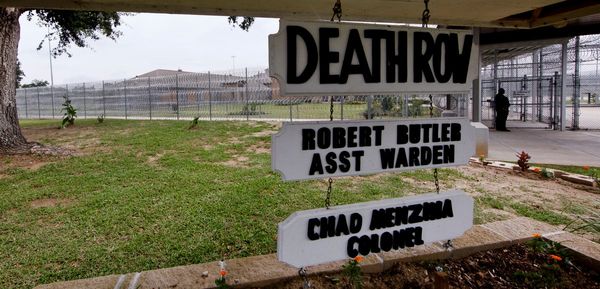
High on a Cornish moor, a living, breathing piece of artwork that is designed to last thousands of years is taking shape.
Called Kerdroya, the piece is a labyrinth – billed as the largest of its kind in the world and constructed out of Cornish hedges, which are a unique combination of stone and vegetation.
The footings of the hedges, the foundation boulders, or “grounders”, are in place, having been hauled out of the shallows of the nearby Colliford Lake by horse and sledge.
As soon as Covid allows, hundreds of people, including schoolchildren, local people and volunteers, will help build and plant up the hedges, creating a classical labyrinth 56 metres across.
In the spring, the site will hopefully be turned into an “outdoor university of Cornish hedging” with a training programme supported by the Guild of Cornish Hedgers passing on the age-old art to the next generation. More than 60 apprentice Cornish hedgers are to work on the labyrinth, learning from experts.
The project director, Will Coleman, said Cornish hedges were an “unsung wonder.” He said the labyrinth would not be a tourist attraction but a “piece of land art” that would provide a place of quiet contemplation.
“I really think this is the ideal project for these times,” he said. “We will build it, then plant it and after that, we walk away, let it become what it becomes, tell nature: ‘Off you go, have some fun with that.’”



Some Cornish hedges are believed to be 4,000 years old, making them one of the oldest human-made structures still used for their original purpose.
They are neither a hedgerow nor a dry stone wall. In the east of the county they are more likely to have shrubs on the top; in the windswept, weather-battered far west, they may consist of earth and hefty stones.
But all types of Cornish hedge are rich in plant and animal life and in the spring and summer often a riot of colour, home to 600 types of flowering plants.
The makers of Kerdroya (a Cornish word that could be roughly translated as castle of turnings) also make it clear it is a labyrinth, not a maze. “A maze is about getting lost,” said Coleman. “This labyrinth will be about finding yourself.”
Coleman says there are bigger mazes but he believes Kerdroya, which is being created on a disused car park close to the A30, will be the largest classical labyrinth in the world. “At least nobody has told me of a bigger one,” he said.
Visitors will follow a single meandering path through the labyrinth. While most of the raw material will be from Bodmin Moor, there will be sections of stone from other parts of Cornwall, put into place under the supervision of hedgers used to working with that particular stone. The hedges will be topped with plants include whitethorn and hawthorn.
The project, which has received funding from a wide range of organisations including Cornwall council, Arts Council England and the National Lottery Heritage Fund, was launched to celebrate the 60th anniversary of the Cornwall Area of Outstanding Natural Beauty in 2019.
It will not be completed any time soon. But Coleman argued it was better that way and said the West Country expression “dreckly” – which literally translates as “directly” but in fact means at some unspecified time in the future – was a good word to use. “When you are building something to last 4,000 years, everything is better off done dreckly.”








